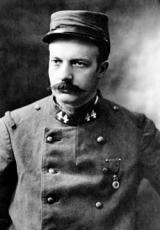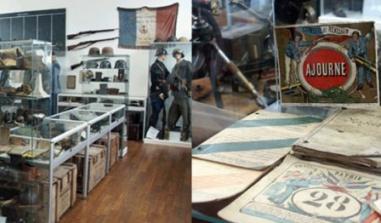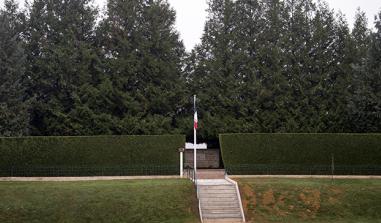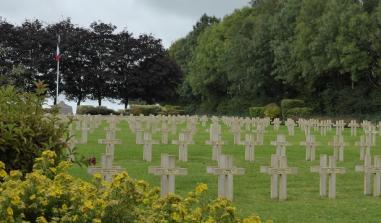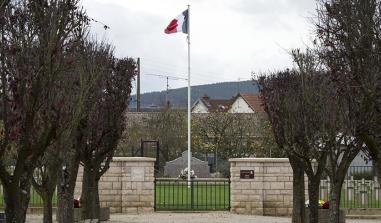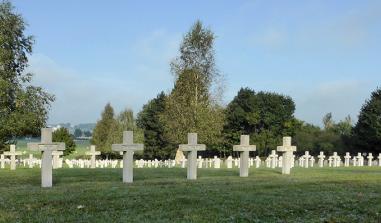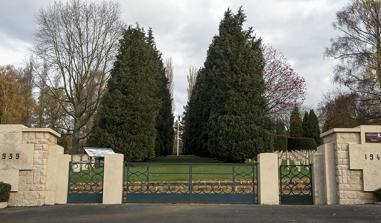Museum of War and Peace in the Ardennes
in the Ardennes
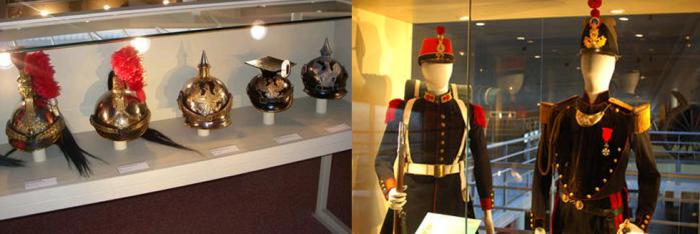
Vitrines du musée. Source : Musée Guerre et Paix
Museum scheduled to reopen in 2014.
From Imperial France’s defeat at Sedan in 1870 to the famous German breakthrough in 1940, the Ardennes have been the theatre of bloody battles...
Gateway to the sites and museums preserving the memory of the last three wars in the Ardennes department, the Museum of War and Peace in the Ardennes is located at Novion-Porcien.
Built by Agence Trois Arches at the initiative of the Ardennes Departmental Council, this site was inaugurated in July 2003.
Occupying four thousand square metres in two complementary spaces on the ground floor and on the first floor or mezzanine, national and local military aspects of the wars of 1870, 1914-1918 and 1939-1945 are presented.
The visitor reaches the museum from the East through an enclosed, semi-underground space.
The ground floor lets you experience the main events of the conflicts through ten large scenes, each accompanied by an explanatory video. The tone is set with the charge of Prussian infantry, the best trained and best equipped army of the day when Napoleon III declared war on Bismarck and Wilhelm I’s Germany after the Ems Dispatch. Then comes the fighting at the house of the last cartridge in Bazeilles, a village 8 km from Sedan where commander Lambert’s group of seventy men stood up to 2,300 Germans in September 1870.
World War I is depicted through the life of German and French troops in the trenches. The soldiers had left home with "flowers in their gun barrels", but found themselves in a war of positions in which men on both sides dug underground to protect themselves, giving rise to the figure of the French “Poilu” who suffered the rigors of the seasons, shortages and bloody attacks, which in the end led to mutiny.
This visit through five tableaux gives an idea of the military aspects of the last war. Everyday life on the Maginot Line during the Phoney War between September 1939 and May 1940, a fortified underground system desired by the French Army staff headquarters who were convinced that the Ardennes could not be crossed. Then "Case Yellow" is presented, the plan for invading France following the principle of the Blitzkrieg, a joint attack by armoured units and aviation that led to the Allied rout at Dunkirk and the establishment of the Vichy government after the armistice was signed on 22 June 1940.
Everyday life: STO (Service du Travail Obligatoire – Compulsory Work Service), deportation and resistance fill the next scene dedicated to the Allied landing in June 1944. The ups and downs and the importance of the logistical resources deployed to win the Battle of Normandy and the re-conquest of Europe form the narrative framework for the display of Anglo-American equipment such as jeeps, Sherman tanks, amphibious trucks and movable bridges.
Upstairs, the mezzanine lets you contemplate the scenes on the ground floor from a distance, but especially provides an initiation to the evolutions in warfare throughout history and the main progress made in weaponry. As before, information kiosks provide the scientific and technical explanations necessary for understanding each exhibit. The windows dedicated to changes in soldiers’ lives presents them in their uniforms, which trended toward keeping them invisible for the enemy, from red trousers to khaki outfits, not to mention the German feldgrau and the French bleu horizon, from the Pickelhaube (spiked helmet) and ceremonial uniforms to the Adrian helmet and the American M1 helmet, but also show their everyday life – packs and supplies, entertainment – and the progress made in health and hygiene – collective showers, toothpaste, shaving cream, etc.
The visit finishes with a look at the changes made in warfare through progress made in military techniques. Each main type is presented. You can take your time to delve into the revolution of rifled arms, cartridges, smokeless powder, shells, automatic arms and the machine gun (Maxim, Chauchat, M1 Garand), but also the continuity of ancestral battle techniques: knives, sabres, bayonets, and the headaches of cleaning out the trenches during World War I.
Museum of War and Peace in the Ardennes
Route Sery - 08270 Novion Porcien
Tel.: +33 (0)3.24.72.69.50
Fax: +33 (0)3.24.72.97.30
Motorway access, A4 to A34. Route de Sery.
Ardennes Departmental Council / General Directorate of Departmental Services /
Departmental Directorate of Tourism and Leisure Centres
Hôtel du Département
08011 Charleville-Mézières Cédex
Tel.: +33 (0)3.24.59.60.60
Fax: +33 (0)3.24.37.76.76 / +33 (0)3.24.52.48.02
Opening hours
The museum is open every day from June to September from 10 am to 7 pm
From 10 am to 12 pm and from 2 pm to 6 pm from October to May, every day except Tuesdays
Annual closing: 15 to 31 January, 1 January, 1 May and 25 December
Admission
Adults: €5 Under 18, military personnel, job seekers, veterans: €3 Families (2 adults and up to 3 children): €14 Groups (at least 20 people) Adults: €3.50 Schools: €2 Children under 6: free
Audioguide services available in French, English, German and Dutch.
Guided tours by reservation. The Museum is fully accessible to the disabled
Other resources – A temporary exhibition room is used to expand upon and round out the permanent exhibit – An auditorium can hold 70 people for conferences and projections – A leisure area
Ardennes Departmental Council
Practical information
Route Sery 8270
Novion-Porcien
03 24 72 69 50
Adults: €5 Reduced price: €3 Families (2 adults and up to 3 children): €14 Adult groups (at least 20 people): €3.50 School groups: €2 Free for children under 6 years of age
June to September: 10 am to 7 pm. October to May: 10 am to 12 pm and 2 pm to 6 pm. Open year round for groups (at least 20 people) by reservation.
Currently closed for renovation. Closed from 23 December to 31 January, 1 May and Mondays from October to May.


